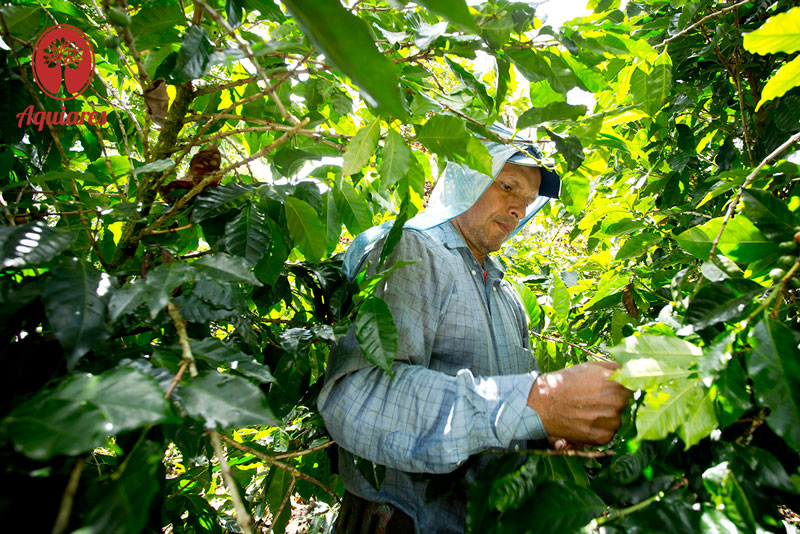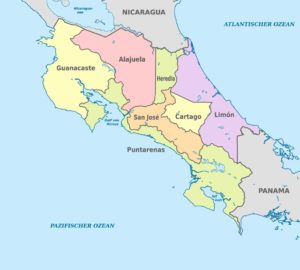
Research and innovation in the (Arabica) coffee paradise
Pristine jungles, dream-like beaches and fertile lands for some of the best specialty coffees in the world. This is how we could describe the small Central American state of Costa Rica, where coffee has always been one of most important exported goods and where only Arabica varieties are grown in eight different regions.
The growth of coffee is so important for Costa Rica that it even led to the modernization of the country itself and of the coffee business. This can clearly be seen in some of the largest fincas which are nowadays so large, they resemble a village where the farmers and their families live. A place like where tomorrow’s specialty coffee trends are shaped.
Diego Robelo and his farm
To know the importance of research in the development of coffee in Costa Rica, listen to the interview we made to Diego Robelo for our “Meet the coffee farmer” series. Diego Robelo is the owner, but above all the soul of Aquaries Estate, a finca which is much more than a simple farm. It is nowadays both a community for 2000 inhabitants and an international coffee research center, with collaborations all over the world.
From one of these collaborations, the Entre Rios coffee was born: a micro-lot with notes of citrus, cherry and caramel. The result of the perfect synergy between the plantation and the surrounding jungle. The Entre Rios coffee is Rainforest Alliance certified and has achieved 85.75 points by the SCAA tasting protocol

A politically stable country with a passion for coffee

Arabica coffee arrived 1808 in Costa Rica straight from Ethiopia. It immediately became the country’s main export resource.
At the time, Costa Rican coffee was mainly exported to Chile and then shipped to the United Kingdom under the name of “Café Chileno de Valparaíso”.
Thanks to the intuition of an English captain in 1843, the first direct route was established from Costarica to the United Kingdom. From that moment onwards, the English merchant ships began spreading Costa Rican coffee throughout Europe, helping to change the country’s fate forever.
Easily to imagine, the growth of exports gave birth to a real class of farmers and wealthy traders whose profits contributed to the construction of the country’s railway network and to society’s modernization.
Today Costa Rica has the most stable democracy in Central America and even if coffee is no longer the main exported good, it still remains one of the best specialty coffees worldwide thanks to a constant research and development of the production practices.
Where Costa Rican coffee specialties are produced
Costa Rica is a narrow strip of land between two oceans. It has the perfect climate and altitudes for growing Arabica coffee. The volcanic soils, the rainfall and the richness in vegetation result in a multitude of microclimates which contribute to a coffee that is rich in body and aroma, sweet and delicate, with a medium acidity.
Harvested between October and February, Costa Rican coffee is mainly processed with the washed method. The Arabica types grown are: Typica, Caturra, Catuai, Bourbon, Gesha, Villablobos and Rume Sudan, as well as those typical of the country such as the Obata, Marsellesa and Villa Sarchi varieties
The Central Valley, where the capital of San Jose is located, was the first region of Central America to grow coffee. The regions of the West Valley instead, as in Terrazu and Tres Rios are those where the best coffees in Costa Rica are produced.
Sarchi, which is located in the West Valley, is the city that gives its name to the famous Villa Sarchi variety, first identified here around 1950. Together with Naranjo, these are the most renowned areas for a great quality of coffee.
Terrazu instead, is an internal region of Costa Rica where the growth of coffee takes place at altitudes above 1.200 meters, thus allowing the development of a full-bodied coffee with a complex aroma.
Finally, Tre Rios is the name of a region near the Pacific coast and its coffee, grown up to an altitude of 1,600 meters on the volcanic soils of the nearby Irazu volcano, is distinguished from the others by its sweet and delicate flavor. Coffee is also produced in four other areas of the country. In Orosi, for example, coffee has been cultivated for over a century, while in the regions of Turrialba, Guanacaste and Brunca it is much more difficult to achieve a high-quality coffee due to excessive rainfall and the low altitudes of the crops.

